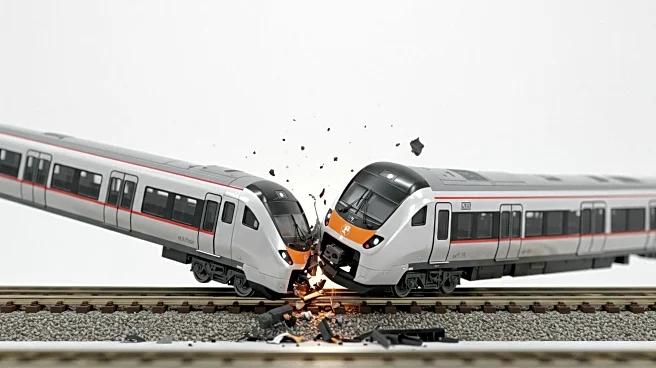What's Happening?
A train in Denmark derailed after colliding with a slurry tanker at a railway crossing in southern Jutland, resulting in one fatality and several injuries. The incident occurred between the towns of Tinglev and Kliplev, with emergency services, including helicopters, dispatched to assist the injured passengers. The national rail agency, Banedanmark, confirmed the collision and subsequent derailment of multiple carriages. The train was carrying 95 passengers, including school pupils from Sønderborg, and services between Tinglev and Sønderborg have been shut down.
Why It's Important?
This tragic accident highlights the critical importance of railway safety and the potential risks associated with level crossings. The incident may prompt a review of safety protocols and infrastructure at railway crossings in Denmark to prevent future occurrences. The disruption of rail services in the region could impact local transportation and logistics, affecting daily commuters and businesses relying on rail connectivity. The involvement of school pupils underscores the vulnerability of young passengers in such accidents, potentially leading to increased scrutiny on passenger safety measures.
What's Next?
Authorities are likely to conduct a thorough investigation into the cause of the collision and derailment. This may involve examining the condition of the railway crossing, the actions of the train operator, and the circumstances surrounding the slurry tanker's presence on the tracks. The findings could lead to recommendations for improved safety measures or changes in regulations governing railway crossings. Local communities and stakeholders may call for enhanced safety protocols to prevent similar incidents in the future.
Beyond the Headlines
The accident raises broader questions about the safety of railway infrastructure and the adequacy of current safety measures at level crossings. It may also lead to discussions on the balance between maintaining efficient rail services and ensuring passenger safety. The incident could influence public perception of rail travel safety and prompt calls for technological advancements in railway safety systems.











